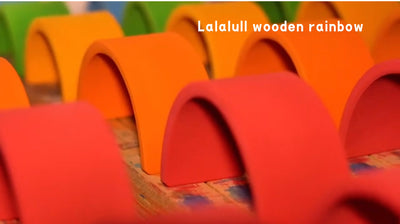The Right Time: When to Start Solids
Introducing solid foods is a significant milestone in your baby's development. Typically, most babies are ready to start solids around 6 months of age, but it can vary. Key signs that your baby might be ready include being able to sit up with minimal support, showing interest in your food, and the ability to push food to the back of the throat with the tongue.
Essential First Foods: What to Introduce and Why
Starting with iron-rich foods is recommended as your baby’s iron reserves inherited from the womb start to diminish around 6 months. Pureed meats, fortified baby cereals, and legumes are excellent first choices. Gradually, you can introduce fruits and vegetables to provide a range of vitamins and minerals.
Baby's First Spoonful: Techniques for a Smooth Transition
The first experiences of eating solids can shape a child's future eating habits. Begin with small, teaspoon-sized portions and thicken the consistency as your baby gets used to swallowing solids. Remember, the goal is gradual familiarity, not quantity.

How to Safely Introduce New Foods
Introducing solids is not just about the "what" but also the "how." Safety and engagement are key. This is where the Silicone Feeding Set comes into play. Designed with your baby's safety and autonomy in mind, this set includes:
Anti-Choking Training Spoon and Fork: Ergonomically designed to fit your baby’s tiny hands, these tools encourage self-feeding under supervision while minimizing the risk of choking.
Plate and Bowl with Suction Base: To avoid mess and ensure stability, both the plate and bowl firmly attach to the table. This design not only prevents spills but also supports your baby’s attempts at self-feeding, making mealtime a less stressful and more enjoyable experience for everyone involved.
![]()
![]()
The LaLaLull silicone feeding Set is crafted from BPA-free silicone, ensuring that it's safe, easy to clean, and durable. It’s specifically designed to grow with your child, supporting them as they transition from purees to more solid foods.

Understanding Baby's Cues: Signs They're Ready for Solids
Pay attention to your baby’s cues. Turning their head away or refusing to open their mouth after several attempts might indicate they are full or not interested at the moment. Respect these signals to foster a positive relationship with food.
Nutritional Needs: Balancing Solids and Milk
As solid food intake increases, the total volume of milk (breast milk or formula) will naturally decrease. However, milk remains a crucial part of the diet up to the age of one year and beyond, providing essential fats and other nutrients.
Allergy Awareness: Foods to Approach with Caution
Introduce allergenic foods like peanuts, tree nuts, eggs, and seafood one at a time and in small amounts to monitor any adverse reactions. Consult your pediatrician for tailored advice, especially if there's a family history of allergies.
Setting Up for Success: Creating a Positive Mealtime Environment
Keep meal times calm and distraction-free. A regular routine where meals are eaten at the same time and place can help your baby feel more secure and willing to try new foods.
Homemade vs. Store-Bought: Choosing What's Best for Your Baby
Both homemade and store-bought baby foods have their benefits. Homemade food is fresh and less expensive, but time-consuming. Store-bought food offers convenience and is designed to meet your baby's nutritional needs, as long as you choose options with no added sugars or salts.
Navigating Challenges: Tips for Fussy & Messy Eaters
Patience is key with fussy eaters. Continue to offer a variety of foods, even if they are initially rejected. Don’t force feed; instead, try again in a few days. Sometimes, it's just a matter of timing.
A non-slip silicone placemat and silicone bib is also helpful to avoid messy table.
![]()
![]()
Building a Diverse Palate: How to Expand Baby's Food Horizons
Introduce a wide variety of flavors and textures early on. This can reduce fussiness and help your child appreciate a broad range of foods as they grow. Keep meals colorful and fun, and involve your baby in the eating process as much as possible.
Starting solids is an exciting time for both you and your baby. With the right approach, you can lay the foundation for healthy eating habits that will last a lifetime. Remember, each baby is unique, so follow your child’s lead and consult with healthcare providers as needed. Happy feeding!
What do official guidelines say?
| The World Health Organization (WHO) | Australia's National Health and Medical Research Council | Australian recommendations |
| recommends exclusive breastfeeding for the first 6 months and then for breastfeeding to continue alongside complementary (family) foods for 2 years or beyond. | (NHMRC) recommends exclusive breastfeeding & Introducing solid for around the first 6 months and then for breastfeeding to continue alongside complementary foods for 1 year, or as long as mother and child desire. | in the current (2012) Australian Infant Feeding Guidelines are to Introducing solid at around 6 months of age. |





